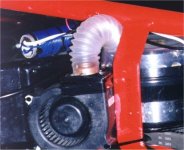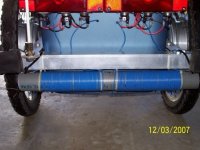monster
100 kW
- Joined
- Jun 17, 2007
- Messages
- 1,411
hi
this is a post to discuss the nity-gritty of regen braking. who has it, what kind have they got and how is it implemented. i have braking only regen braking where the motor coils are shorted out during braking by use of a relay. this is too powerful for my dropouts so i treat it as an emergency brake.
im interested in those that have use light bulbs for different braking potentials. whats your experience?
this is a post to discuss the nity-gritty of regen braking. who has it, what kind have they got and how is it implemented. i have braking only regen braking where the motor coils are shorted out during braking by use of a relay. this is too powerful for my dropouts so i treat it as an emergency brake.
im interested in those that have use light bulbs for different braking potentials. whats your experience?



